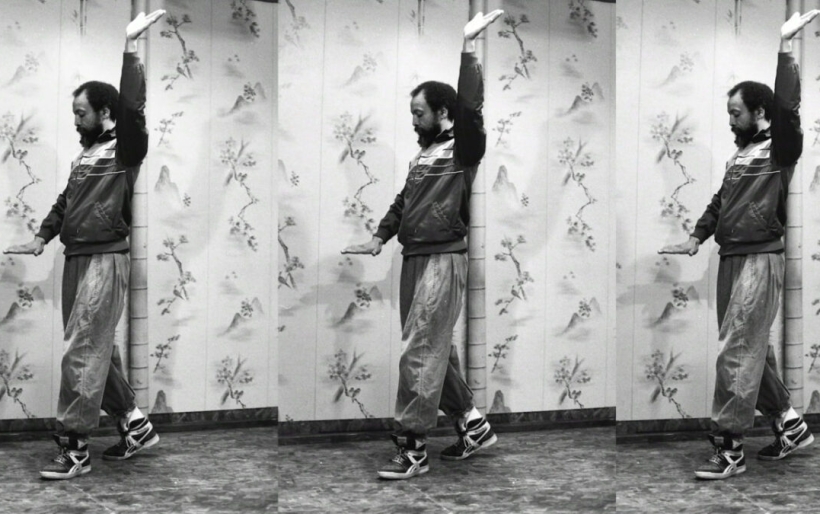
Milford Graves | photo via Ars Nova Workshop
Celebrating the innovations of “The Professor” Milford Graves and other pandemic programming from Ars Nova Workshop
A musician will go up on stage or be in a recording studio and play for half an hour, maybe an hour, at most two, and that will be all anyone might know about their accomplishments. When we do hear about other artistic or intellectual pursuits, they’re often presented in a way that obviously paints them as an afterthought, a bonus, even a novelty.
When it comes to Milford Graves – jazz percussionist, inventor and innovator, artist, gardener, martial arts practitioner, longtime faculty at Bennington College, community activist, dancer, herbalist, cardiac technician, acupuncturist, and lifelong teacher – there is literally no way to separate the different pieces of his life. Each of them impact the other and together they make the person known to friends, fans, and fellow musicians as The Professor.
That is all on display at the Institute of Contemporary Art in the recently-opened “Milford Graves: A Mind-Body Deal” exhibit curated by the Ars Nova Workshop and running until the end of January.
While Ars Nova might be best known for the numerous concerts and other live music events they host in the Philly area, the scope of their mission extends beyond that, something that is especially crucial these days. Artistic Director Mark Christman, who founded the organization almost 21 years ago, explained that this shift has been an ongoing one: “After the first decade it became more and more frustrating that the work that Ars Nova was presenting and supporting was limited by the stage.” To that end they began booking shows in non-traditional spaces and doing other programming that was not just the standard band, venue, and audience.

One of those events was a Milford Graves show in 2014 at Bartram’s Garden in Southwest Philly. The arboretum, which was started by John Bartram in 1728 and is considered the birthplace of American botany, was chosen because of Graves’ strong interest in herbalism and the healing properties of plants. “It seemed like a great match,” Christman told The Key. He said that it was at that concert the conversation with Graves started which ultimately lead to the ICA exhibit.
At the ICA Graves’ work and indeed his life is displayed in a number of different ways: the first room you enter showcases some of his visual art and the program from John Coltrane’s 1967 funeral which he performed at alongside Albert Ayler and others. The next room, what Christman referred to as “the laboratory,” contains an array of kinetic scientific sculptures and many diagrams and drawings, including some Graves made just a few days before the show opened.
The rest of the exhibit, split between the two floors of the museum, is a mix of videos from throughout Graves’ life – there’s a whole section on the martial art he invented and popularized called Yara, named after the Yoruba word for ‘quick’ or ‘nimble’ and based on the movements of the praying mantis plus traditional West African dance and the Lindy Hop– as well as a drum kit and other artifacts from his home. There is also a lot of footage from his time working with Japanese dancer and choreographer Min Tanaka. Just about everywhere you look you’ll see references to the heart and the heart rhythms, something Graves has dedicated himself to studying for decades.
On his website Graves states: “My research originates from a belief that music is a universal language, and a curiosity to define the primary building blocks of that language. You can look at any culture’s approach to music and find commonalities. No matter how you divide scales into tones, semitones or microtones, all human music falls within an octave. These universals transcend borders and cultural mindsets. Exploring these universals led me to what I believe is the common denominator: the human heartbeat.”
While Graves is well known for his improvising as a percussionist, Christman suggested that those same improvisational skills turn up throughout everything he’s done: “There is a strong and endless curiosity that is fundamental to artists like Milford. That mind has lead him to a life of accomplishments and curiosity and tinkering and creative misuse, even, that brings him into the worlds of botany, science, acupuncture, and martial arts.”
Indeed, it is Graves’ almost-religious obsession with heart rhythms and the healing properties of sound that has earned him the most acclaim he’s received outside of music. After recording and analyzing the heartbeats of thousands of volunteers – including many well-known musicians – in his basement laboratory, he has developed numerous theories that have been well-received by scientists. He was awarded a Guggenheim Fellowship in 2000 for his work and even owns a patent on the topic of stem cell regrowth. His life and creative process were highlighted in a 2018 documentary called “Full Mantis.”
“Milford, he’s very special because he’s able to digest a lot and absorb a lot, compress all of these things that he absorbs, and they all have a relationship to one another and it comes out in whatever aspect of his life we’re looking at,” Christman told The Key. “I don’t think he’s looking at Yara, the study of the microrhythms of the heart, tonal rhythmology, tabla, or performing with [Peter] Brötzmann as very different things.”
Following the 2014 concert “we struck up a relationship,” Christman said. “I mean, you know, a relationship: like a student has a relationship to a teacher. I pursued him and visited him and continued to talk to him which means that he continued to talk to me. And ultimately it led to one conversation after another and more and more and a very gradual glimpse into his entire world.”
That world is centered on the home in Jamaica, Queens where Graves and his wife Lois have been living for the past 50 years. It is, like the artist, a multi-faceted and multi-use space: expansive gardens, a dojo, room for music and art, a collection of cardiac imaging equipment, and more. Christman has visited the house often over the past few years and especially the last few months leading up to this exhibit. He talked about how the space very much embodies Graves: “You begin to see all of the amazing stories and histories and art pieces and you realize he’s been an amazing archivist and documentarian of his own life.”
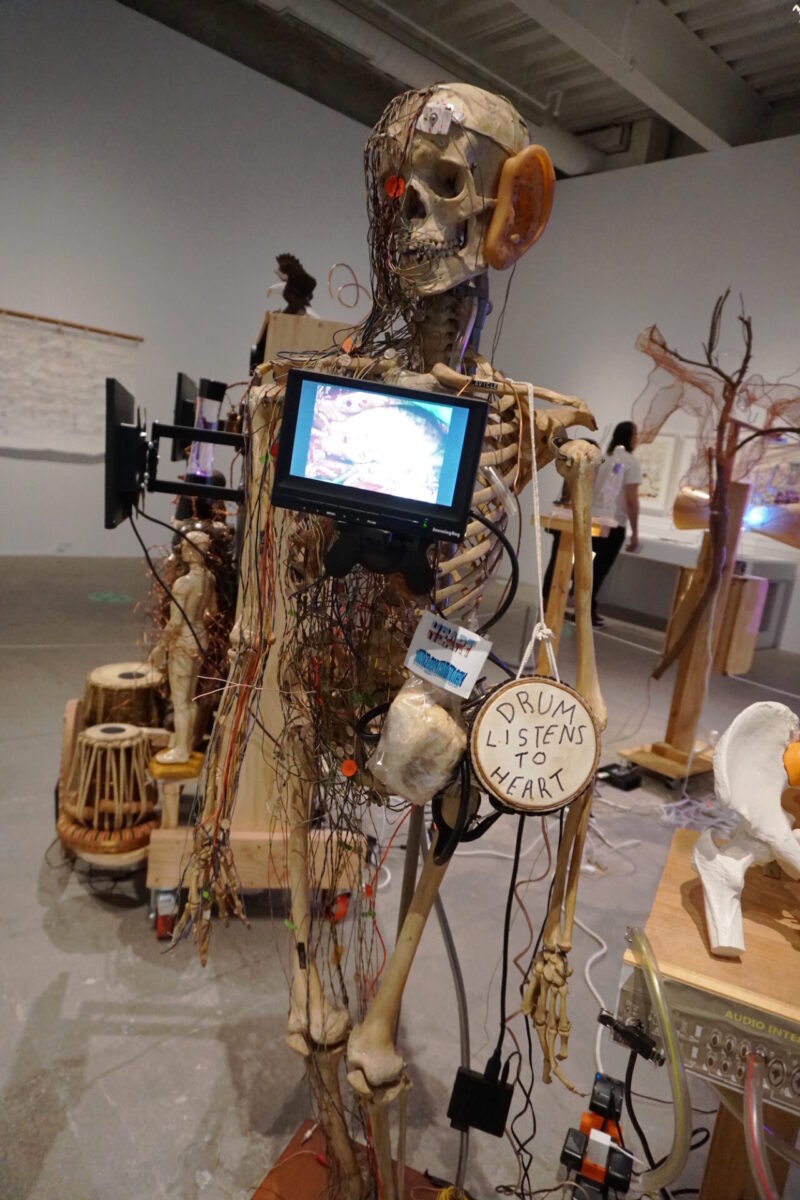
The question for Christman became how to re-contextualize that in an art gallery in a totally different city. Because of the pandemic limiting the amount of in-person interactions between the staff at Ars Nova and the ICA and especially Graves, much of the responsibilities fell on Christman. He told The Key that he often consulted with Graves about the content of the exhibit as well the layout.
“He’s been a real force and an active organizer,” Christman said. “Milford has a lot to share and we have a lot to learn from him. It was important for me to be a student above all else, certainly above a curator. Many of these things that are in the show, they haven’t really left his house ever. So it was a real opportunity and one that he was gracious enough to be open to.”
Despite the fact that Graves is widely considered one of the greatest percussionists of his generation and has recorded, performed, and worked with basically everyone – Ayler, John Zorn, Lou Reed, Bill Laswell, Min Tanaka, and Miriam Makeba, just to name a few – this is only the second major exhibit of his offstage work. In 2018 the Queens Museum focused on Graves for their biennial.
Concentrating on just one aspect of a musician’s output feels like a mistake to Christman. “I start to think about John Coltrane and Roscoe Mitchell and Tyshawn Sorey and Pauline Oliveros and I’m wondering what extraordinary things were happening in their gardens, in their kitchens, in their laboratories, in their classrooms, in their families,” he said. “I wonder what we have missed this entire time by focusing more on these kind of commercial constructs that have limited our ability to see beyond the recording or the stage.”
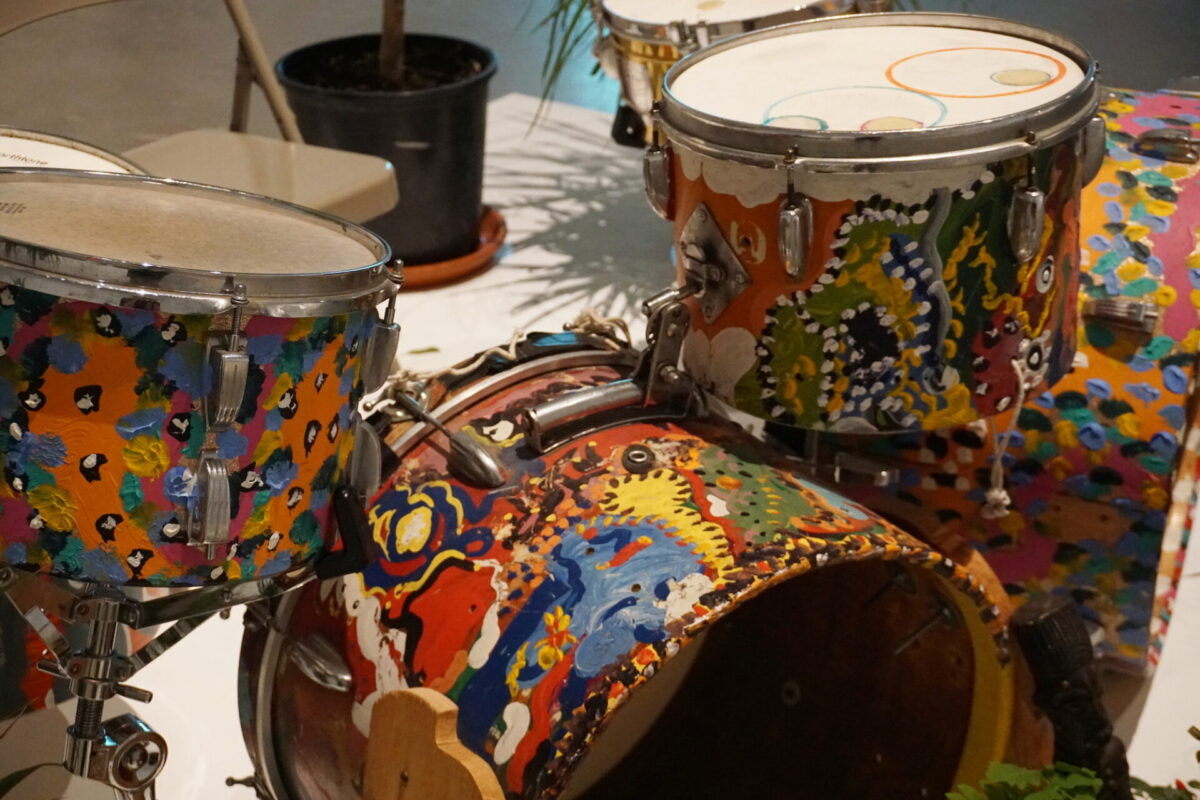
Because of social distancing restrictions, Ars Nova decided to do the opening reception virtually over Zoom. The call was mainly a conversation between Christman, ICA Chief Curator Anthony Elms, and Blake Bradford, currently the Director of the Points of Entry nonprofit and previously the Director of Education at the Barnes Foundation. During that talk, the topic of Graves’ as a mostly-self taught polymath and his reach beyond music was constant.
Elms described Graves as “one of the most important drummers in free jazz – unabashedly one of the five most influential drummers in jazz from 1960 forward” but stressed “that’s not the end of it.” Indeed, looking at the biography of Graves on the Ars Nova website it’s hard to fathom that one person has accomplished so many different, varied things.
While Graves only has a high school diploma, he has become a college professor, a scientist, and so much more. That’s partially because, as Bradford put it, “he doesn’t feel the need to stay in his lane” when it comes to having the ‘right’ credentials for learning.
In an almost ironic twist of faith, the 79-year-old Graves has been suffering from a severe heart ailment for the past couple years that has kept him from performing or traveling. The condition, called amyloid cardiomyopathy or ‘stiff heart syndrome,’ has extremely curtailed his movement though it has not stopped his research. In a recent New York Times profile he spoke about how being sick has only intensified his investigations into heart rhythms, especially his own.
After he received the diagnosis Graves decided he needed to buy his own ultrasound machines because that’s what the doctors were using during a recent visit. As Christman told The Key, that was so Graves “could have a deeper relationship with his insides.” Now those machines and the videos he produced have been worked into some of the sculptures in the exhibit.

While he won’t be coming to Philadelphia, Christman did promise to try and get Graves on one of the many virtual events Ars Nova has planned during the duration of the exhibit. There will also be an illustrated companion catalogue that will be published by Inventory Press next year.
“Milford is with us. He’s still creating,” Christman told The Key. “The world knows him for his amazing work on stage primarily, whether it’s with John Zorn or Albert Ayler, and the recordings that he has contributed to and his amazing improvising skills and ability to liberate the drum set. He is a very important part of jazz history. But it’s also clear that jazz history only reflects one aspect of a creative life, and a life of curiosity. … We’ll continue to explore what he has accomplished when we were just paying attention to his music.”
Asked what he hopes audiences take away from the exhibit, he said: “I think above all of that we have to ask ourselves what other aspects of the arts and culture and creativity have come out of the African American community that define and and permeate this country and when are we going to begin to really recognize them and honor them?”
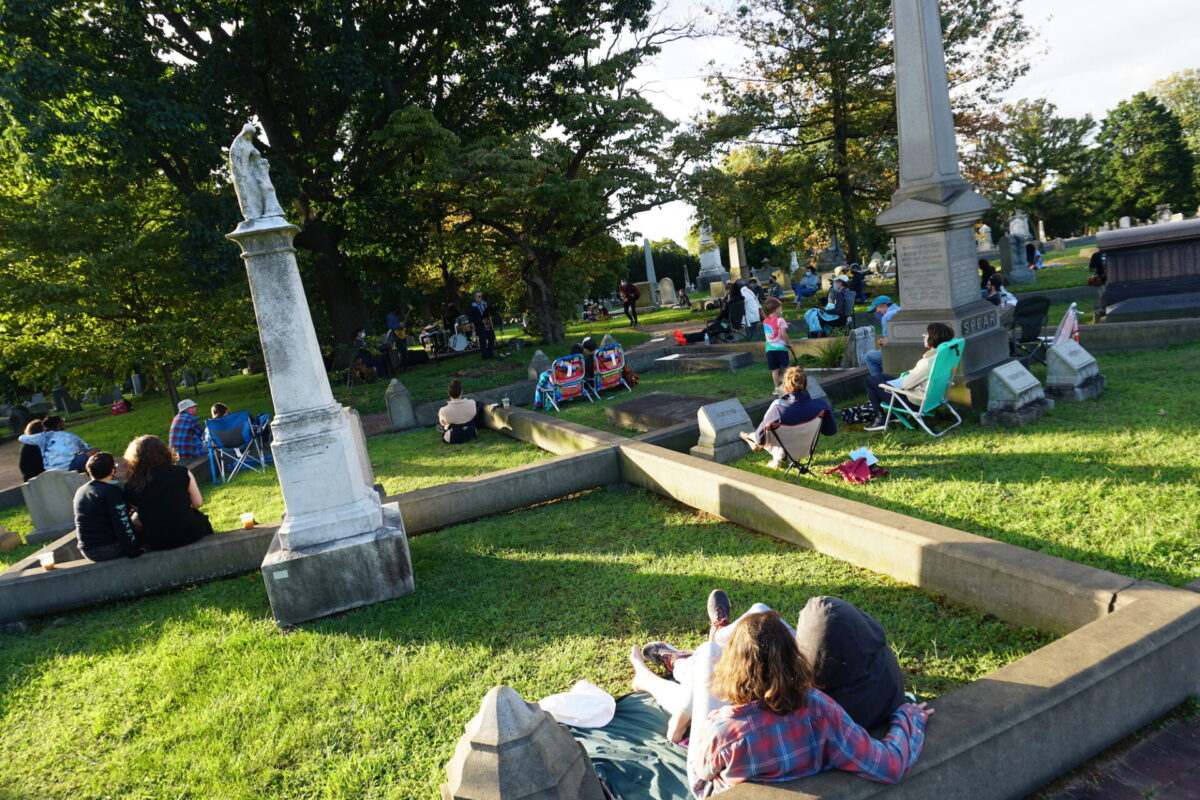
Even though the pandemic has put a hold on traditional live music, Ars Nova Workshop has been quite active. In addition to the Graves exhibit at ICA, they have partnered with The Woodlands, a cemetery and park in West Philadelphia, to do a variety of programming. As Christman explained, “It’s an opportunity to connect with a community and to develop relationships in the long term.” That partnership kicked off in August with two socially-distant Charlie Parker centennial concerts and bird watching walks.
According to Christman, they’re building a mobile studio that will reside in one of the historic mansions at The Woodlands. As he put it, the idea is to “be able to commission artists, get them working and thinking and being creative.” Those performances could also be videotaped and shown online. One of the bands he’s hoping to get into the studio is the Sun Ra Arkestra, who have long had a relationship with Ars Nova and are releasing a new album in October. He also mentioned that they are in conversation with Mural Arts Network about possibly doing a Sun Ra mural in Germantown next year.
Ars Nova recently announced the creation of a new label focused on in-house recordings. The first release will be an album of Muhal Richard Abrams songs by The Warriors of the Wonderful Sound, lead by saxophonist Bobby Zankel. That will be out on LP soon. You can read more about it here. Christman said that in the near future they are planning on putting out “probably another half a dozen archival releases from over the years.”
They are also starting a podcast called Ad Hoc: Why Improvisation Matters that’s focused on the concept both within the world of music and also outside of it. Christman told The Key that the show will be produced by Alex Lewis of WXPN and NPR, known for his work on The Dig and The Gospel Roots of Rock & Soul.
While Ars Nova does not have any concerts currently announced, he did say that they would be “trying to do one or two things” at The Woodlands before it got too cold for outdoor events. They are also working on a walking tour of the cemetery focusing on both local and music history.
Jazz is “the greatest American invention and also an African American invention” Christman told The Key, and West Philadelphia has played a “pivotal role” in that. He mentioned a number of musicians who have called the neighborhood home including McCoy Tyner, Rashied Ali, Questlove, and Christian McBride as well as the importance of the bars on The Strip – what 52nd St. was known as back in the day – and Geno’s Empty Foxhole in the basement of St. Mary’s Church on Penn’s campus.
The pandemic and this switch in programming has given the organization the opportunity to focus on its future. That includes contending with the current political climate as well as the history of jazz as a Black cultural phenomenon co-opted by white musicians, audiences, and promoters. Christman, who is white, said that part of that means “exploring how we can be part of the healing process.”
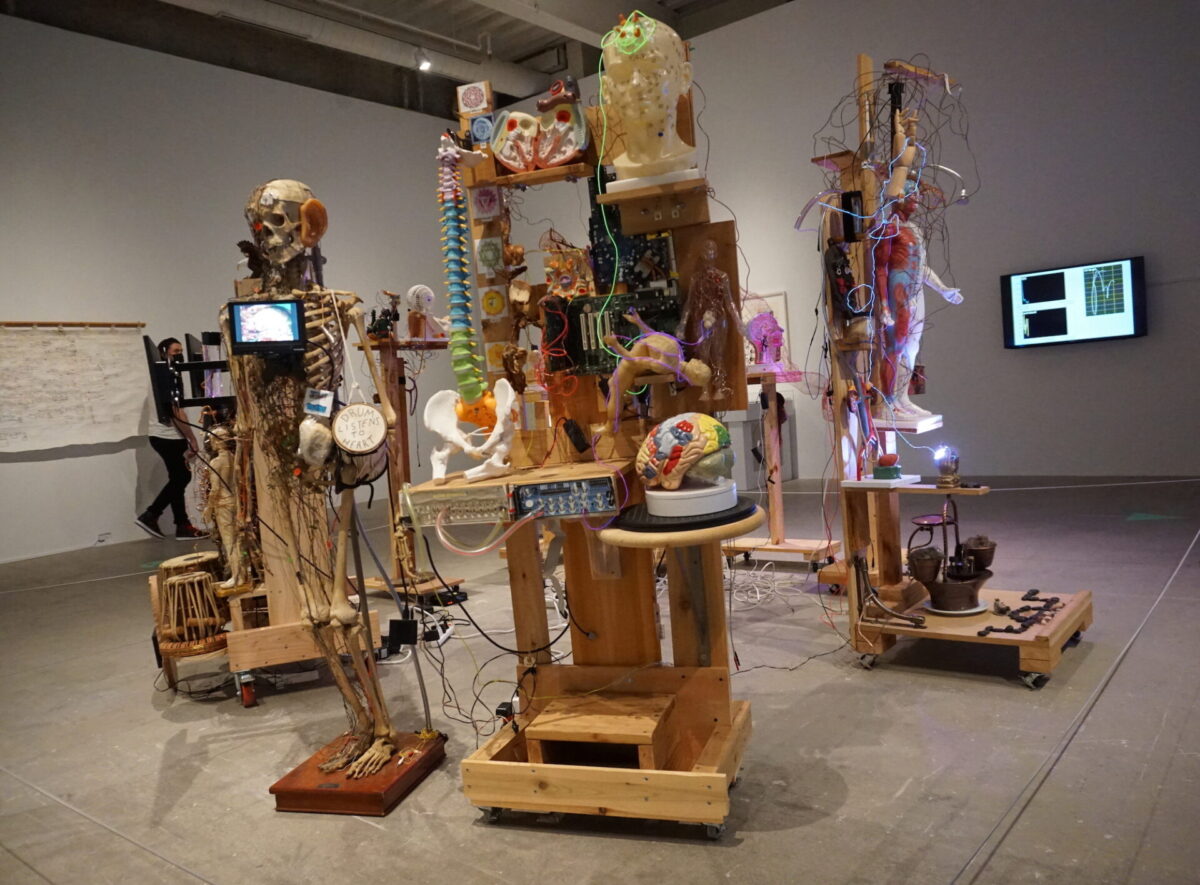
Trying to run an organization during everything that’s happened in 2020 must at times feel quite impossible. It requires a lot of patience but also the ability to quickly shift gears and, well, improvise. It seems fitting that Ars Nova is contending with the world while also organizing this exhibit about a master of improvisation.
“There’s really no playbook for a lot of this stuff,” Christman told The Key. “Since March, many of us have been improvising our own humanity, whether people are thinking of it in those terms or not.”
Milford Graves: A Mind-Body Deal runs at the Institute of Contemporary Art through January 24, 2021: more information can be found here.
